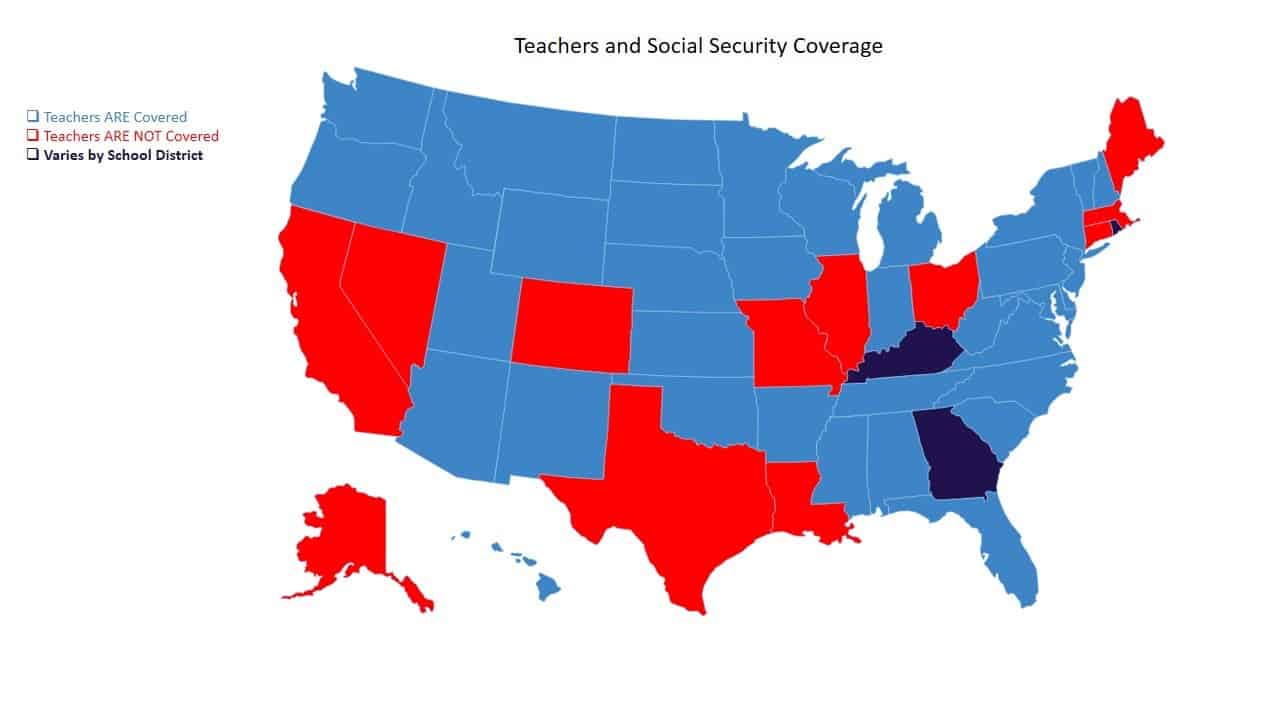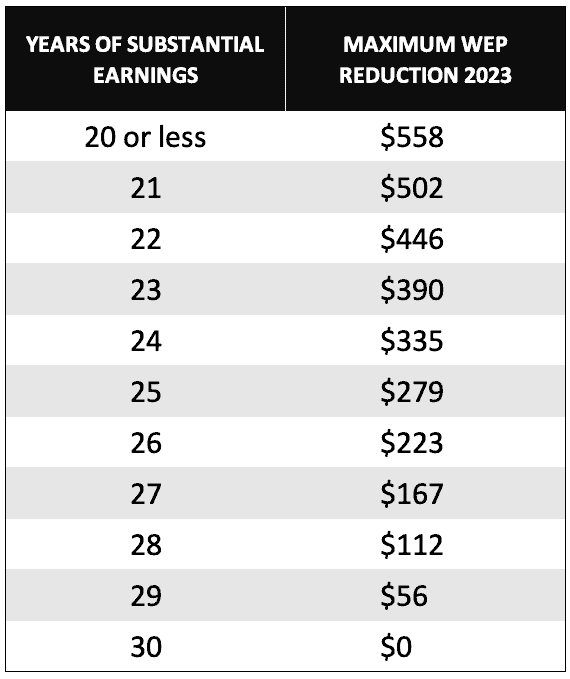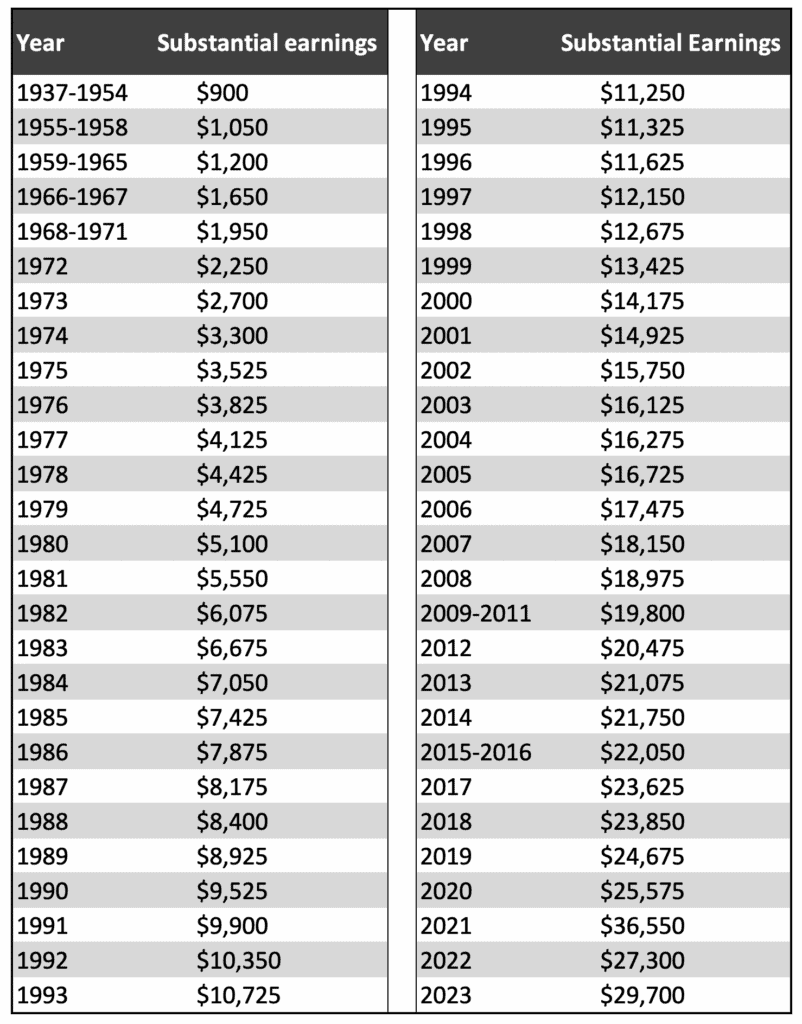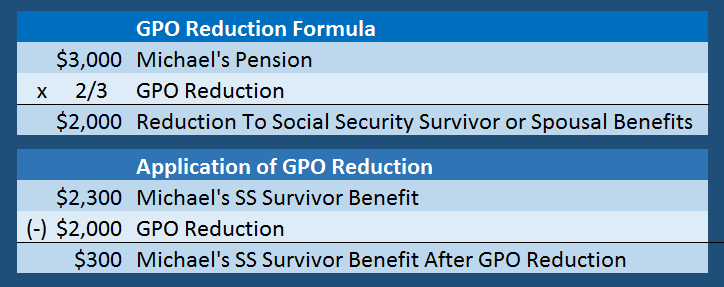


That’s one of the most commonly asked questions that I see in my Facebook group Social Security WEP & GPO Discussion.
There’s no doubt this can be a complex topic and most of the teachers that I’ve talked to have seen lots of conflicting information — so let’s clear up the confusion and take a closer look at the rules on teacher’s retirement and Social Security.
In the 1970s and 1980s, laws were passed that amended the Social Security rules to keep individuals from “double dipping,” or receiving both a Social Security benefit and a pension from a job where they did not pay into the Social Security system.
The results of these amendments are two rules that could impact your ability to claim your full Social Security benefit as a teacher: The Windfall Elimination Provision (WEP) and the Government Pension Offset (GPO).
These provisions reduce (or eliminate) benefits for those who worked in a job in which they:
This is not limited to teachers. Other professions that often fall into this group include public sector workers like firefighters, police officers and numerous other state, county and local employees.
In the beginning, Social Security didn’t cover any public sector employees. But as many states dropped their own pension plans and adopted coverage agreements with the Social Security Administration, things have changed.
Today there are still 15 states that participate solely in their own pension plans instead of Social Security:

Those states are:
If you are a teacher in one of those states, the rules for collecting a Teacher’s Retirement System (TRS) pension and Social Security can be confusing and maddening to try and figure out.
That’s especially true if you’ve paid into the Social Security system for enough quarters to qualify for a benefit, which is fairly common among teachers.
Many teachers find themselves in this situation for a variety of reasons. For some, teaching is a second career, after they’ve spent years working in a job or a state where Social Security taxes were withheld.
Others may have taught in a state where teachers do participate in Social Security. For example, teachers in my town, which is divided between the states of Arkansas and Texas, could qualify for both.
If they worked in Arkansas (where teachers do participate in Social Security) for at least 10 years and then taught in Texas (where teachers don’t participate in Social Security), they would qualify for both Social Security and the Teacher Retirement System of Texas.
UPDATE: Don’t leave without getting your FREE copy of my latest guide: Top 10 Questions and Answers on the Windfall Elimination Provision. You CAN simplify these rules and get every dime in benefits you deserve! Simply click here.
This may surprise you but your Social Security statement does not reflect any reduction in benefits due to your teacher’s pension. They’ll wait until you file to tell you what the reduction is if you qualify for both a teacher’s retirement and Social Security benefits.
Understanding if a reduction in benefits will apply to you, and how much that will be, does not have to wait until you file for Social Security. You can get a good idea today by understanding the key differences between the two rules which may reduce your benefit amount:
From a very high level, you should understand that the WEP rule only applies to individuals who are eligible for a Social Security benefit based on their own work history and have a pension from work where they did not pay Social Security tax.
Meanwhile, the GPO rule only applies to individuals who are entitled to a Social Security benefit as a survivor or spouse and have a pension from a Federal, state, or local government job, in which they did not pay Social Security tax.
Here’s a look at how each rule would impact your benefit.
The Windfall Elimination Provision (WEP) is simply a recalculation of your Social Security benefit if you also have a pension from “non-covered” work where no Social Security taxes were paid. The normal Social Security calculation formula is substituted with a new calculation that results in a lower benefit amount.
It would be easy to write a multipage essay on the WEP, but the necessary components can be distilled to a few simple points:

Image Source: Devin Carroll, Data: Social Security Administration
This phase-out of the WEP reduction offers a great planning opportunity if you have worked at a job where you paid Social Security tax. For example, if you worked as an engineer for 20 years before you began teaching, you may be able to do enough part time work between now and when you retire to completely eliminate the monthly WEP reduction.
Would it be worth it? If you consider how much more in benefits you could receive over your retirement lifetime, it could be worth $100,000 in extra income over a 20-year retirement.
Obviously, not everyone has the option of accumulating enough years to wipe out the big monthly WEP reduction. But for those who do, or can get close, it’s worth taking a closer look.

I know this is a lot to follow, so if you want to take a shortcut in figuring out how the impact of the WEP, you may want to use my free calculator.
This calculator will tell you:
To use this calculator you’ll need to get a copy of your earnings history from the SSA. You should only put in your years of earnings that were covered by Social Security.
For more information on the Windfall Elimination Provision, see these helpful resources:
The nitty-gritty of the Government Pension Offset (GPO) is simple. If you meet both of the requirements for the GPO – you are entitled to a Social Security benefit as a survivor or spouse and have a pension from a government job where you did not pay Social Security tax – your Social Security survivor or spousal benefit will be reduced by an amount equal to two-thirds (2/3) of your pension.
As an example, let’s say Michael worked for 30 years as a teacher in California (one of the 15 states where schoolteachers are not covered by Social Security) and his wife was an accountant.
Upon retirement, he began receiving his California teacher’s retirement pension of $3,000 per month. His wife retired at the same time and filed for her Social Security benefits of $2,300 per month. Sadly, she passed away a short three years later.
Upon her death, Michael learned that because of his CalSTRS pension he would not be eligible to receive a normal Social Security survivor’s benefit. Thanks to the GPO his survivor’s benefit was reduced to a measly $300 per month. Here’s the math:

Source: Devin Carroll
Some would say that’s not fair and I think they have a compelling point. Why? In a case like this the GPO only applies because of Michael’s chosen profession. This is effectively a penalty for teaching (what some call the hero’s penalty).
If he had been a pharmacist instead of working in education, he would have been eligible to receive the full $2,200 per month.
If you’d like to dig into the Government Pension Offset a little deeper, see my article on What You Should Know About the Government Pension Offset.
If you have never paid Social Security tax and only qualify for your teacher’s retirement, it’s likely you’ll never receive a Social Security benefit.
Although this makes perfect sense to some, others think it’s still pretty unfair that this isn’t true for everyone. For example, if you had chosen to stay at home as the household manager, you would not have paid into the Social Security system. However, you would be eligible for spousal and survivor benefits.
These intricate Social Security regulations and how differently they may affect a worker’s retirement income make it critical that you plan ahead and prepare. Before you make your elections on your teacher’s pension, you must consider how your monthly cash flow would change with a spouse’s death.
As a teacher, you have plenty to keep up with and these complex rules on Social Security don’t make it any easier. That’s why it’s important to have a quick and easy source of information at your disposal so can make the best decisions for you and your family.
Don’t leave without getting your FREE copy of my latest guide: Top 10 Questions and Answers on the Windfall Elimination Provision. You CAN simplify these rules and get every dime in benefits you deserve! Simply click here http://www.devincarroll.me/top10WEPSSI.
If you have questions, you could leave a comment below, but what may be an even greater help is to join my FREE Facebook members group. It’s very active and has some really smart people who love to answer any questions you may have about Social Security. From time to time I’ll even drop in to add my thoughts, too.
You should also consider joining the nearly 400,000 subscribers on my YouTube channel! For visual learners (as most of us are), this is where I break down the complex rules and help you figure out how to use them to your advantage.
And don’t leave without getting your FREE copy of my Social Security Cheat Sheet. This is where I took the most important stuff from the 100,000 page website and condensed it down to just ONE PAGE! Get your FREE copy here.